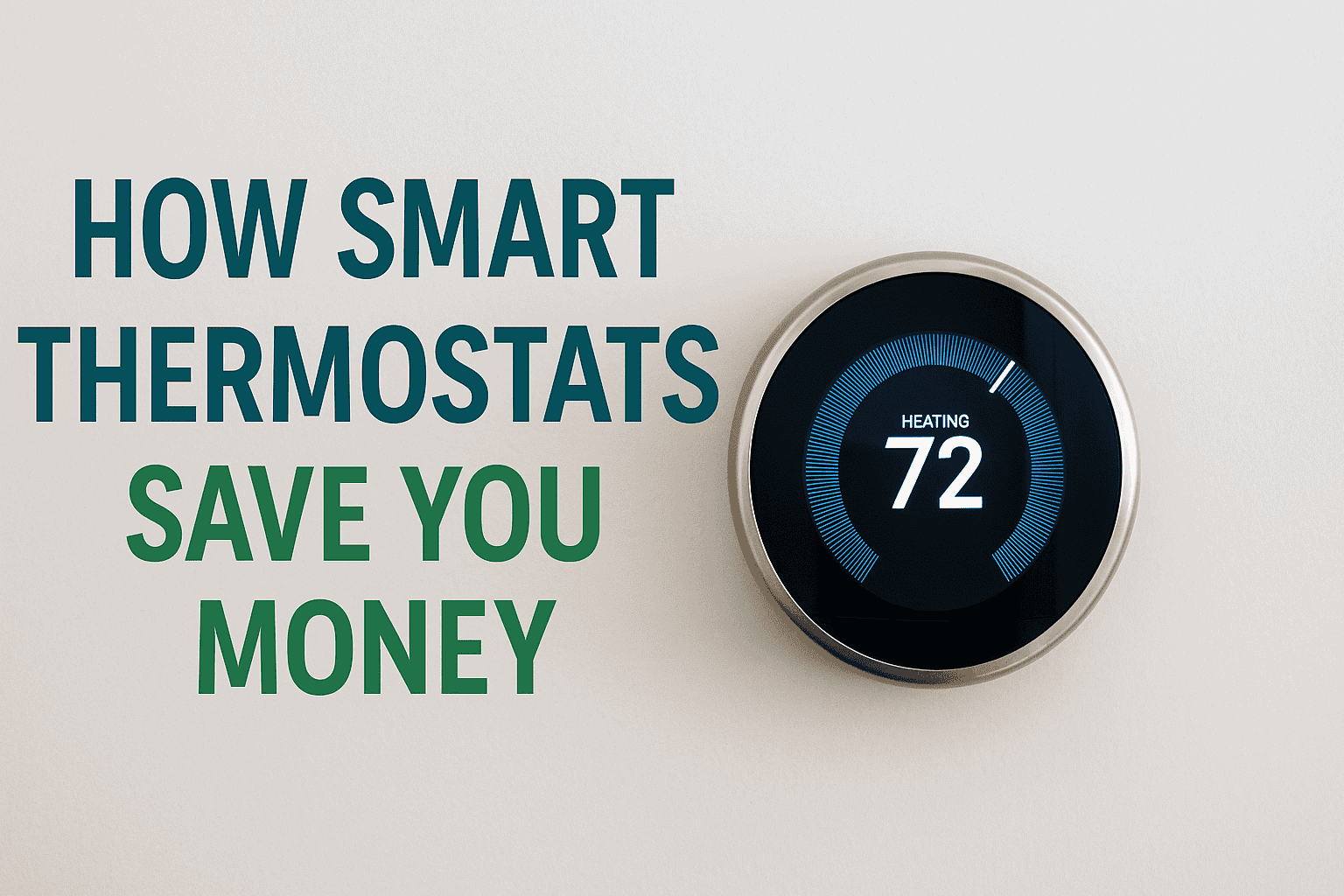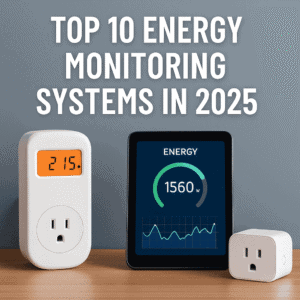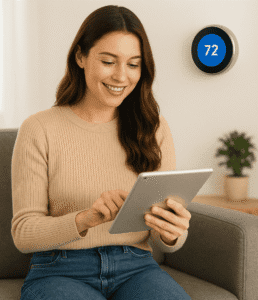How Smart Thermostats Save You Money: Complete Guide
The Smart Way to Save on Energy Bills
Smart thermostats have transformed home energy management, offering automation, learning capabilities, and remote control through mobile apps. With climate change and rising energy costs, homeowners are increasingly turning to smart devices to cut expenses and increase efficiency. This complete guide explores how smart thermostats save you money in 2025, which features matter, and what products to consider. Whether you’re upgrading your home or starting fresh, understanding the true benefits of smart thermostats is key to energy-conscious living.
What Is a Smart Thermostat?
A smart thermostat is a Wi-Fi enabled device that automatically adjusts your home’s temperature settings based on your habits, location, and preferences. Unlike traditional thermostats, it learns your schedule, senses occupancy, and can be controlled remotely. Most models integrate with voice assistants like Alexa, Google Assistant, or Apple HomeKit. These devices offer app-based controls and detailed energy reports to help you optimize consumption.
How Smart Thermostats Work
Smart thermostats utilize motion sensors, geofencing, and machine learning algorithms to make real-time temperature adjustments. By understanding when you’re home, away, or asleep, they minimize unnecessary heating or cooling. Over time, they develop personalized routines for maximum comfort and savings. Cloud connectivity ensures your data is synced across devices for seamless control.
The Real Savings: How Much Money Can You Save?
Studies show that smart thermostats can reduce annual heating and cooling bills by up to 23%. The exact savings depend on climate, insulation, home size, and HVAC efficiency. According to the EPA’s ENERGY STAR program, certified smart thermostats save households an average of $131–$145 per year. Over five years, this could total over $700 in savings.
Key Features That Help You Save
Smart thermostats offer a wide range of features that contribute directly to energy savings:
- Geofencing: Detects when you’re away and adjusts settings.
- Smart Scheduling: Learns your habits and automates temperatures.
- Remote Access: Change settings via your smartphone anytime, anywhere.
- Energy Reports: Track usage and identify inefficiencies.
- Integrations: Connect with other smart home devices for coordinated energy use.
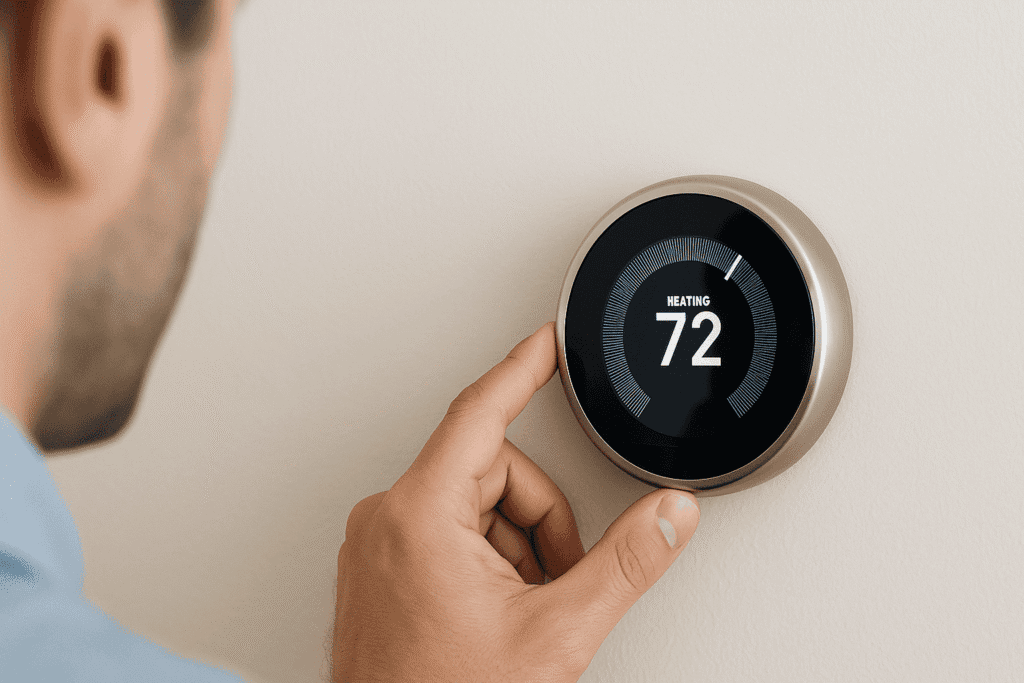
Smart Thermostats vs. Traditional Thermostats
Traditional thermostats require manual input and don’t learn user behavior. Smart thermostats adapt automatically, optimize energy use, and offer remote access. With the addition of features like occupancy detection and AI learning, smart thermostats dramatically outperform manual or programmable models in both convenience and cost savings.
Popular Smart Thermostat Brands in 2025
Here are the most popular and reliable smart thermostat brands in 2025:
- Google Nest Learning Thermostat
- ecobee Smart Thermostat Premium
- Honeywell Home T10 Pro
- Amazon Smart Thermostat
- Emerson Sensi Touch Smart Thermostat
Each offers unique features and pricing, catering to different home sizes and automation preferences.
Google Nest Learning Thermostat: AI in Action
Google’s Nest Learning Thermostat is one of the best on the market. It uses AI to learn your routine and adjusts temperatures accordingly. It integrates seamlessly with Google Assistant and works well with most HVAC systems. The interface is sleek, the app is user-friendly, and it provides monthly energy reports to track progress.
Ecobee Smart Thermostat Premium: Room Sensor Excellence
Ecobee’s thermostat is ideal for large or multi-room homes. It comes with room sensors to detect hot or cold spots and adjust temperatures accordingly. It supports voice control, has built-in air quality monitoring, and even works as a speaker with Spotify integration. Energy-saving recommendations are personalized to your usage.
Installation: DIY or Professional?
Most smart thermostats are easy to install and come with step-by-step instructions. If your home has a C-wire, DIY installation is simple and takes under 30 minutes. For homes without a C-wire or with complex HVAC systems, hiring a professional installer is recommended. Brands like Nest and Ecobee also offer installation services through certified pros.
Compatibility with HVAC Systems
Before purchasing a smart thermostat, verify that it is compatible with your home’s HVAC system. Most support gas, electric, heat pump, and multi-stage systems. Use the manufacturer’s compatibility checker tool or consult your HVAC provider. Poor compatibility can reduce energy savings or cause malfunctions.
Smart Thermostats and Home Automation
Smart thermostats are a key part of any home automation system. They integrate with smart lights, sensors, and appliances to create energy-efficient routines. For example, when you leave the house, your thermostat lowers the heat while turning off unnecessary lights and devices. Smart thermostats are often the foundation of efficient, responsive smart homes.
Mobile Apps and Remote Control
Each thermostat brand has a companion app that allows full control remotely. Whether you’re at work or on vacation, you can adjust temperatures, check energy usage, or switch between modes. Notifications remind you to change filters or alert you to sudden temperature shifts, ensuring consistent comfort and efficiency.
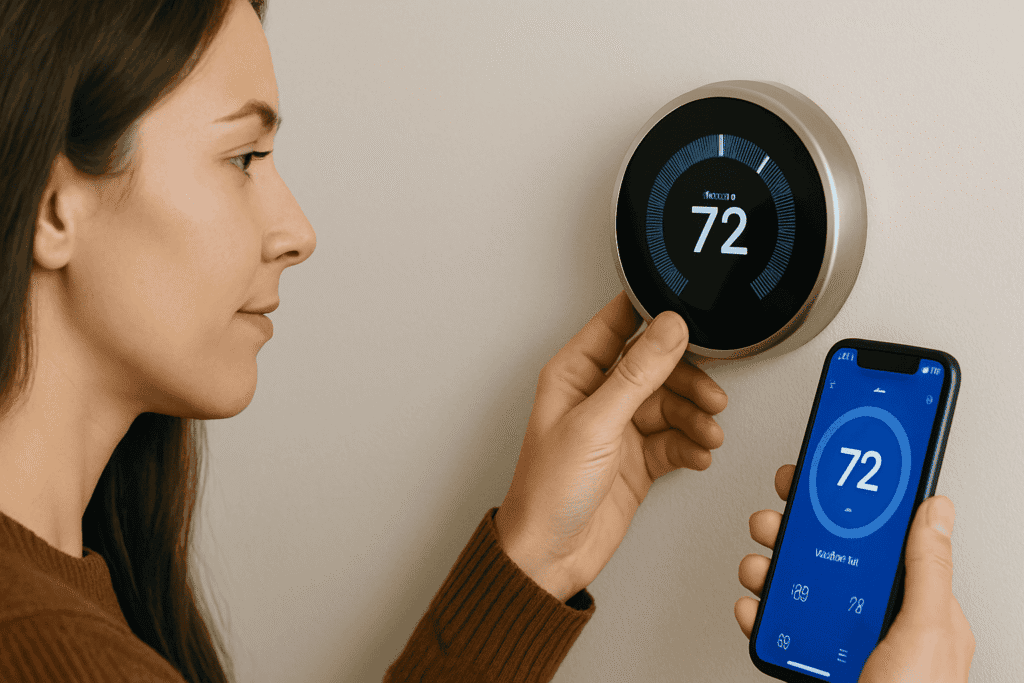
Energy Reports and Usage Insights
One of the most powerful features is the energy reporting dashboard. It shows hourly, daily, and monthly consumption trends. You can compare your usage to similar households, set savings goals, and receive customized tips for further reduction. Over time, these insights help you refine your energy habits and maximize efficiency.
Tips for Maximizing Smart Thermostat Efficiency
- Set temperature schedules based on occupancy.
- Use eco-mode when you’re away.
- Pair with smart blinds or curtains to regulate room heat naturally.
- Regularly review energy reports and adjust settings.
- Keep the thermostat away from heat sources or sunlight.
- Clean sensors and filters regularly.
- Enable geofencing for location-based automation.
- Link with Alexa or Google Home for voice control.
- Invest in room sensors for large homes.
- Keep your HVAC system well-maintained.
Are Smart Thermostats Worth It?
Absolutely. Though they cost more upfront ($100–$250), the long-term savings quickly outweigh the investment. Combined with added comfort, convenience, and sustainability, smart thermostats are one of the smartest home upgrades available in 2025.
Conclusion: Smarter Homes, Lower Bills
Smart thermostats are more than just a modern gadget—they’re a long-term investment in comfort and energy savings. With machine learning, app integration, and precise temperature control, they adapt to your lifestyle while lowering your bills. Whether you’re aiming for sustainability, savings, or both, a smart thermostat is a small change that makes a big impact.
Suggested Reads:

